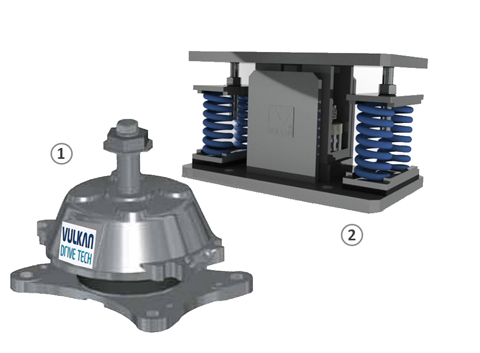Through vibration controls from Isolation tech, the concept of Damping is a standout amongst some of the best strategies for controlling any sort of noise and vibration. It is a procedure that converts vibrational energy into heat, disposing of the vibrational energy through friction and different other procedures. Expanding damping or firmness can both decrease thunderous vibration and the succeeding commotion by keeping the vibration from coursing through the structure.

Rubber mounts with damping properties are regularly used as part of motor compartments, insertions, taxicab dividers, and floor and roof frameworks; also, they are beneficial for use in machines, therapeutic hardware, overwhelming gear, and an assortment of different applications. Materials utilized for damping must reduce the commotion and vibration, as well as, have the capacity to withstand heat.
Why is damping important?
Appliances, heavy gear, generators, and other mechanical structures are known for delivering an incredible amount of noise and vibration. Vibrational energy is dangerous because of countless reasons; it can make an appliance, for example, washing machines, vacuums loud and upsetting for clients. Medicinal hardware can be awkward, and in bigger workings, similar to motors, noise and vibration control might be required in motor compartments, fenced in areas, taxicab dividers, and floor and roof frameworks. This is on the grounds that vibrations can cause insecurity and exhaustion in mechanical structures.
At the point when makers build up these structures, it’s important to choose what kind of damping framework to utilize: free layer damping or constrained layer damping. While constrained layer damping can function admirably for most applications, regardless of whether mechanical, therapeutic or aviation, free layer damping has a few limitations.
Free layer damping:
Free layer damping may not generally be the correct decision for your undertaking, yet it’s the most effortless kind of damping to use. Otherwise called extensional damping, it is generally observed in-car applications. Anyway, how does extensional damping work? It includes a viscoelastic material, ordinarily a polymer. At the point when sound hits the material, the damping item extends or expands and after that packs, going over the noise and vibrational vitality into heat.
Free layer damping controls vibration and noise in items with surfaces that are at or close to resonance and is best for lightweight structures. This is on the grounds that free layer damping adds a lot of weight to your structure, implying that it isn’t perfect for applications where restricting weight is a worry.
Constraint layer damping:
For thick or substantial applications like dividers, roofs, and floor gatherings, extensional damping will most likely be unable to do the trick. At the point when a structure thicker than ¼ of an inch requires damping, the circumstance calls for Constraint layer damping (CLD). Like extensional damping, CLD changes over vibration with the help of an increase in temperature, but, this sort of damping uses a covered development with a viscoelastic polymer sandwiched between two sheets of a firm material, for example, a metal. Since the firm material keeps the damping material compelled notwithstanding vibrational vitality, CLD lessens affect commotion. CLD likewise doesn’t add as much weight to structures as extensional damping, which is another reason it’s frequently utilized as a part of uses like aviation where additional weight impacts execution.
Always find materials that encourage effective damping:
In case you’re working with energetic mechanical structures, odds are that you will need successful damping arrangement. In addition to choosing what sort of damping framework you’ll require, your assembling group should choose what polymers are most appropriate to the application. Your materials supplier ought to have the capacity to work with you so as to decide the ideal approach to decrease noise and vibration in your structure. A custom damping arrangement might be the best for an assortment of utilization, and your provider can enable you to build up a damping framework that diminishes weight when needed, whilst making your structure steady.

